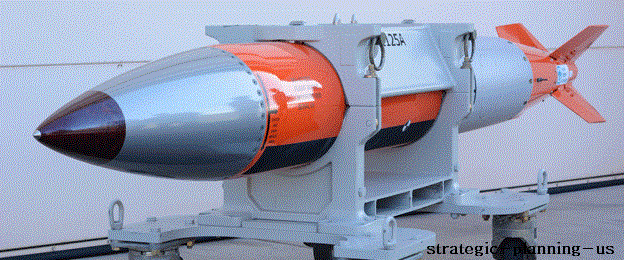Will The B-2 Stealth Bomber Still Be In Service? The B-2 Spirit Bomber Is Being Modernized
 |
| The B-2 Spirit bomber. It is a dream to fly. It is so smooth. |
The B-2 Spirit Bomber Is Being Modernized:
The B-2 Spirit bomber, which entered service in the 80s,
has flown missions over Libya, Iraq and Afghanistan. In fact, given its ability
to fly as many as 6,000 nautical miles without need to refuel, the B-2 Spirit flew
from Missouri all the way to an island off the coast of India called Diego
Garcia – before launching bombing missions over Afghanistan.
Taking off from Whiteman and landing at Diego Garcia was
one of the longest combat sorties the B-2 has ever taken.
The B-2 Spirit bomber was very successful in Afghanistan
and very successful in the early parts of the wars in Liby and Iraq.
The B-2 is described as a platform which can operate undetected over enemy territory and, in effect, “knock down the door” by destroying enemy radar and air defenses so that other aircraft can fly through a radar “corridor” and attack.
However, enemy air
defenses are increasingly becoming technologically advanced and more
sophisticated.
The Weapons:
Air Force pilots of the 1980s-era stealthy B-2 Spirit
bomber plan to arm the B-2 with new weapons and upgrade the aircraft to fly the
aircraft on attack missions against enemy air defenses well into the 2050s.
The programme will overhaul and replace the ageing
non-nuclear components such as fuses and batteries of the existing B61 bomb
variants B61-3, B61-4, B61-7, and B61-10.
The B-61 Mod 12 is being engineered to rely on an
inertial measurement unit for navigation.
The B61-12 Nuclear
Weapon:
The development engineering of the B61-12 LEP began in
February 2012. The first development flight test of the bomb was conducted by
F-15E in July 2015 and the baseline design review was completed in January
2016.
The B61-12 nuclear weapon has a weighs approximately 825lb and length of 12 feet. It can be fired at the target in either ballistic gravity or guided drop modes.
 |
The new variant development is part of the B61-12 Life
Extension Programme (LEP), which is a joint effort between the US Air Force and
the National Nuclear Security Administration (NNSA).
The B61-12 air-launched tactical bomb will carry a
low-yield nuclear warhead to destroy military targets with minimum collateral
damage. Located in the bomb’s middle section, the warhead will have four yield
options, including 0.3kt, 1.5kt, 10kt, and 50kt.
The bomb uses an inertial navigation system (INS) to
achieve high kill probability, while improving the survivability of the launch
platform. The weapon is expected to have an accuracy of approximately 30m.
The programme will extend the B61 bomb’s service life by 20 years, while increasing safety, security and reliability, a total of 400 bombs are expected to be refitted at an estimated cost of 7.6 billion dollars.
The B-2 will also carry the B-61 Mod 11, a nuclear weapon designed with penetration capabilities.
The LRSO will replace the Air Launched Cruise Missile, or
ALCM, which right now is only carried by the B-52 bomber.
Alongside its nuclear arsenal, the B-2 will carry a wide range of conventional weapons to include precision-guided 2.000-pound Joint Direct Attack Munitions, or JDAMs, 5.000-pound JDAMs, Joint Standoff Weapons, Joint Air-to-Surface Standoff Missiles and GBU 28, 5.000-pound bunker buster weapons.
The JASSM-ER:
The platform is also preparing to integrate a long-range
conventional air-to-ground standoff weapon called the JASSM-ER, for Joint
Air-to-Surface Standoff Missile, Extended Range.
 |
| The JASSM-ER AGM-158 |
The JASSM-ER features a penetrating blast-fragmentation
warhead, infrared seeker and improved digital anti-jam GPS receiver to dial
into specific points on high-value, well-fortified, fixed and relocatable
targets.
Weighing 2,000lb and has a range
of more than 500 nautical miles, the cruise missile can be used in all weather
conditions.
 |
The Massive Ordnance Penetrator (MOP)
The Massive Ordnance Penetrator (MOP) :
The B-2 can also carry a conventional bomb known as the
Massive Ordnance Penetrator.
The Massive Ordnance Penetrator (MOP), legitimately large
at 30,000lb, this bomb is designed to penetrate up to 200 feet of earth or
man-made protective materials such as concrete, depending on hardness.
The combination of a B-2’s stealth and the MOP’s
penetrating ability clearly enables US planners to strike hard buried targets
by surprise.
 |
This is a GBU-28 (bunker-buster weapon) on steroids. It
will go in and take out deeply buried targets
The Avionics :
The platform B-2 has held up and remained very effective
– given that it was designed and built during the 1980s.
The B-2 is engineered with avionics, radar and
communications technologies designed to identify and destroy enemy targets from
high altitudes above hostile territory.
 |
| It is a digital airplane. We are presented with what is commonly referred to as glass cockpit |
The glass cockpit includes various digital displays,
including one showing Synthetic Aperture Radar (SAR) information which paints a
rendering or picture of the ground below.
SAR provides the pilots with a realistic display of the ground that they are able to use for targeting
The B-2 has a two-man crew with only two ejection seats. Also, the crew is trained to deal with the rigors of a 40-hour mission.
The B-2 represents a huge leap in technology from our
legacy platforms such as the B-52 and the B-1 bomber. This involved taking the
best of what is available and giving it to the aircrew.
The Air Force currently operates 20 B-2 bombers, with the
majority of them based at Whiteman AFB in Missouri. The B-2 can reach altitudes
of 50.000 feet and carry 40.000 pounds of payload, including both conventional
and nuclear weapons.







No comments